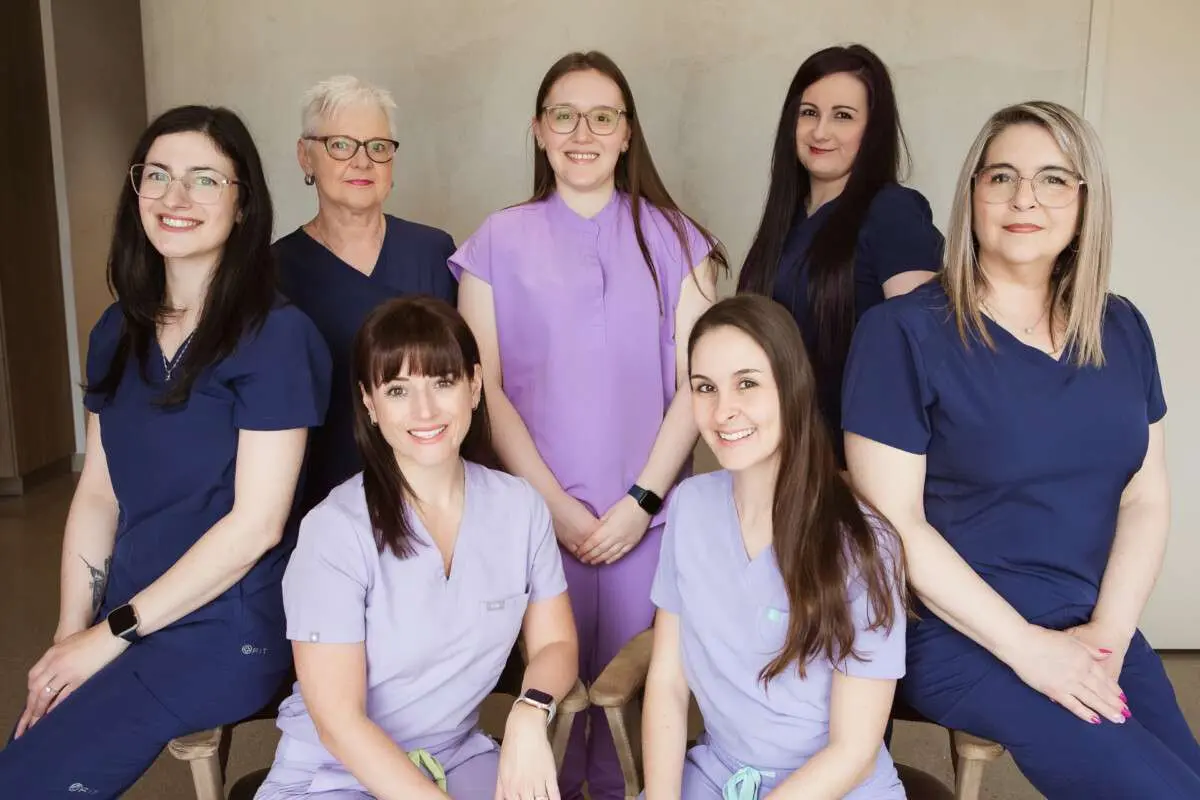
After the former owner of the Jonquière clinic, podiatrist Ginette Bourgeois, had retired, podiatric physicians Judith Roelly and Marie-Michelle Fecteau took over the operations. Since then, the clinic’s new co-owners have dedicated their professionalism and vast know-how to the benefit of the region’s population.
Dr. Roelly and Dr. Fecteau are both versatile and involved podiatrists who are also responsible for operating the Chutes clinic in Beauport. Furthermore, their expertise is not limited to podiatry alone: Dr. Roelly also holds a bachelor’s degree in nursing, while Dr. Fecteau has a radiology license and is trained in medical biology.
Together, they provide comprehensive, high-quality treatment to all of their patients. Choose a team of professionals that you can count on to keep your feet in good shape!
PiedRéseau Jonquière
3872 Rue Saint Jean,
Jonquière, QC
G7X 0N8
directions
1-418 548-4945 Toll free
Monday
10:00 - 18:30
Tuesday
8:00 - 17:00
Wednesday
8:00 - 17:00
Thursday
8:00 - 17:00
Friday
8:00 - 12:00
A lively clinic that puts the patient’s well-being first
The Jonquière podiatry clinic, formerly the Ginette Bourgeois podiatry clinic, has been providing the people of Saguenay with modern care in a safe and welcoming atmosphere for over 35 years now. Its team employs the latest technologies to ensure an efficient and personalized treatment for every condition.
With your well-being at heart, the podiatrists at the Jonquière clinic know exactly how to adapt their treatments for your specific needs and put their extensive expertise at your service. The clinic’s principal services include: the design of plantar orthoses, postural assessment by imaging, podopediatrics, minor surgeries and the treatment of dermatological conditions in feet.
Contact the Jonquière podiatry clinic to enjoy a highly personalized treatment.
Frequent problems
- Corns, calluses and severe corns
- Heel spur (Lenoir’s thorn)
- Foot bunion (hallux valgus)
- Ingrown toenail (onychocryptosis)
- Plantar fasciitis: causes, symptoms and treatments
- Metatarsalgia : symptoms and treatments
- Morton’s neuroma : symptoms and treatments
- Athlete’s foot (tinea pedis)
- Diabetic foot : symptoms and treatments
- Flatfoot : symptoms and treatments
- Plantar fissures : symptoms and treatments
- Hammer toe : symptoms and treatments
- Plantar warts: causes, symptoms and treatment
Treatments provided
- Postural evaluation
- 2D and 3D digital imaging
- Cortisone injections
- Foot ultrasound imaging
- Evaluating Children’s Feet
- Biomechanical exam : symptoms and treatments
- Ultrasound guided injection
- Nail culture : importance, advantages and procedure
- Therapeutic foot taping
- Plantar orthotics: types, benefits, and adaptation tips
- Foot care – Nails, corns and calluses treatment
- Ingrown toenail treatment by a podiatrist
- A podiatrist’s treatment for plantar warts
- Therapeutic laser treatment
- Treatment of foot pain by the podiatrist
- Podopediatrics treatments
- Toenail deformity : treatments
- Treatments for paronychia of the toe
- Stress fracture in the foot
- Treating frostbite on the feet and toes
- Treatment for excessive foot sweating
- Partial or complete foot amputation
- Ultrasound treatment
- Orthopaedic shoes : types and benefits
Surgical procedures offered
Responsible for personal information/confidentiality: Marie Michelle Fecteau 418-542-7672
Request an appointment at the clinic
Leave us your contact details and availability and we will contact you to make an appointment.
Please note that if you are seeking podiatry services following a work-related accident (CNESST) or a road accident (SAAQ), please contact us before your appointment to obtain more information about the reimbursement procedures.







